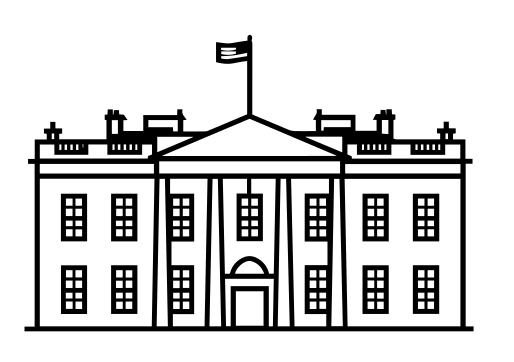How often do Vice-Presidents become Presidents?
Critical Analysis
Find answers to the following questions using the visual above, any links below, your big brain, and your knowledge of American government and politics:
How often do Vice-Presidents become Presidents?
What is the most common method by which Vice-Presidents become President?
Based solely on the number of vice presidents who became president from the visual above, what are the odds that Vice-President Kamala Harris will become President Kamala Harris?
Who was the last vice-president to become president?
Shortly after announcing his run for the Democratic nomination in 1960, John F. Kennedy said: “I don’t recall a single case where a vice-presidential candidate contributed an electoral vote.” Still, the north-easterner picked Lyndon Johnson as his running-mate, hoping that the senator from Texas would help him in southern states. Johnson tore across the South in a train nicknamed the LBJ Express, arriving at rallies in a ten-gallon hat to the strains of “The Yellow Rose of Texas”. After he won, Kennedy admitted that “we couldn’t have carried the South without Johnson”. That Johnson “delivered the South” is now received wisdom. But how much difference do vice-presidential picks will actually make in this year’s presidential election?
The political science research says it doesn't matter very much who the Vice Presidential nominee is. People tend to focus on the top of the ticket. Do you think that the Walz v Vance matchup will make much of a difference in the 2024 election?
Presidents have not always picked their vice presidential candidates. The original system for electing presidents provided that the candidate receiving a majority of Electoral College votes would become president, while the runner-up would become vice president. Thus, the POTUS and VEEP (Vice-President) were often of opposite political parties. The 1800 election resulted in a tie between Thomas Jefferson and Aaron Burr. Under the Constitution, this stalemate sent the election to the House of Representatives, which chose Jefferson. The states soon ratified a twelfth amendment to the Constitution, requiring separate contests for the offices of president and vice president. The 12th Amendment does leave one wrinkle in our election system: the POTUS and VEEP may not “be an inhabitant of the same state.” Does that seem like a good prohibition to you?
Even after the 12th Amendment, the President still did not chose the VEEP - that choice was up to the party conventions who chose their own chose the president and vice president. By the 1900s, there are some cases where the presidential nominee had some influence over who became the vice president, but it wasn't until about the 1960s that you could always expect that the presidential nominee would have control or influence over who would be the vice president. Describe the ideal system to choose a Vice-President.
Based on the visual below* which current VEEP nominee is more popular?
William Howard Taft was elected the 27th President of the United States (1909-1913) and later became the tenth Chief Justice of the United States (1921-1930), the only person to have served in both of these offices. He was also the solicitor general of the United States! Wow. The Vice-President has the unique position of being the only person who serves in two branches of government at the same time: as second in command of the executive branch and as President of the Senate (they can break a tie in any Senate vote). What do you think the Framers, especially James (checks and balances) Madison would have thought about a person serving in two branches?
Write and Discuss
Take ten minutes to write about the question at the top of the page and then discuss with your classmates.
Act on your Learning
Tweet Tim Walz @Tim_Walz or JD Vance @JDVance and let them know what’s up!
Get Creative
The following are actual quotes about the Vice Presidency:
"You're not going to take it, are you?" — Grace Coolidge to her husband, Calvin, after he was nominated for vice president in 1920.
"I suppose I'll have to." — Calvin Coolidge's reply. He became president upon Warren Harding's death in 1923.
"I do not propose to be buried until I am dead." — Daniel Webster, turning down the vice presidency in 1839.
It’s fair to say that nobody grows up dreaming of becoming the Vice President, yet over the years 49 people have taken the job. Write the quote you would say if one day you were offered the Vice-Presidency:
Learning Extension
Our searchable archive of over 1000 lessons to build U.S. government and politics content knowledge and skills. Cancel at any time. Use promo code SIGNMEUP at checkout to get the first month of our monthly subscription for free!





